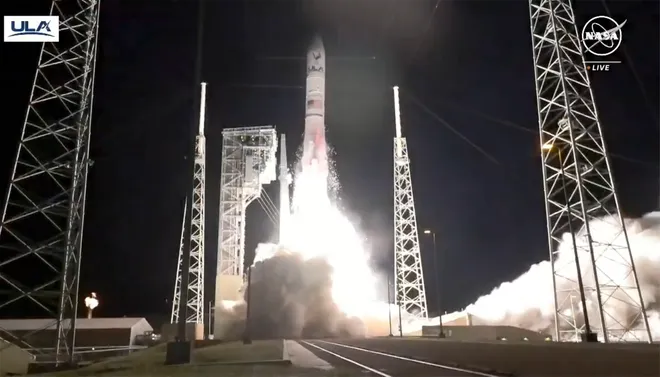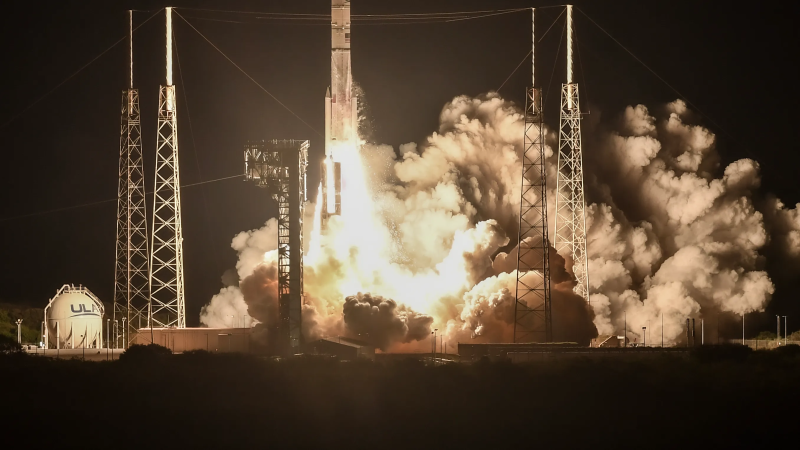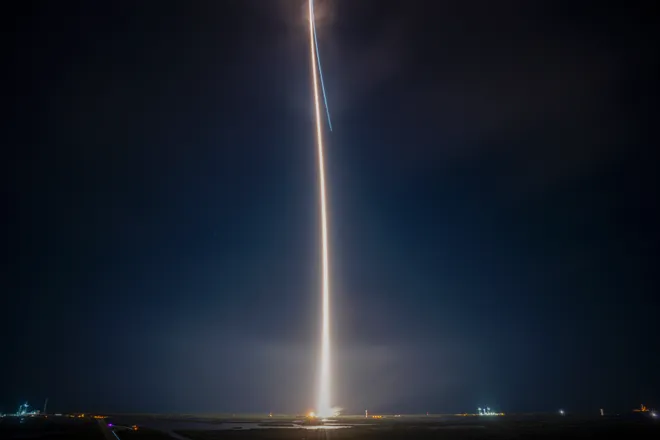Navajo Nation 'relieved' human remains didn't make it to the moon. Celestis vows to try again.
When Astrobotic's Peregrine lander burned up Thursday upon its return to Earth's atmosphere, the remains and DNA of more than 70 deceased people once bound for a lunar burial disintegrated with it.
The deceased passengers' place aboard the spacecraft became the subject of no small controversy when the largest tribe of Native Americans in the United States penned a letter opposing the moon memorial plan. Calling the intended lunar burial "a profound desecration," Navajo Nation President Buu Nygren urged NASA and other agencies to delay the launch until the tribe's concerns were heard.
A last-minute meeting was convened days ahead of the doomed mission. But when the Peregrine hitched a ride Jan. 8 aboard the United Launch Alliance's new Vulcan rocket, it still contained the memorial capsules.
Hours into the flight, Pittsburgh-based aerospace company Astrobotic began to notice issues with the propulsion system. Despite attempts to salvage the moon-landing mission, Astrobotic was forced to accept the inevitable: the lander was leaking a "critical" amount of propellant that almost certainly would dash any hopes of it touching down on the moon.
In light of the mission's failure, Navajo Nation insisted it "never opposed the scientific exploration of space," Justin C. Ahasteen, the organization's executive director of its Washington office, said in a statement to USA TODAY.
"While we are relieved that the Peregrine mission failure means that the lunar surface will not become a resting place for human remains, we recognize the disappointment and setback this represents for all those involved in the mission," Ahasteen said. "Our concerns are specific to the inclusion of human remains on missions intended for the Moon, which we consider sacred."

U.S. moon race:Could China beat the US back to the moon? Congress puts pressure on NASA after Artemis delayed
Astrobotic scraps plans for moon landing after propellant leak
Once plans for a lunar landing were scrapped, Astrobotic Technology instead sought to maneuver its uncrewed craft as close to the moon as possible before it lost power.
By Sunday, the company decided to let Peregrine burn up while reentering Earth's atmosphere and crash into a remote area of the Pacific Ocean to avoid "the risk that our damaged spacecraft could cause a problem" in space.
If the mission for the lander to touch down had been a success, it would have been the first time a U.S. craft made contact with the moon since the last Apollo mission in 1972, and the first American commercial craft to ever do so.
Aboard Peregrine was a science payload from NASA, which is interested in studying the moon ahead of plans to send astronauts back to the lunar surface for its since-delayed Artemis missions. Even though the lander wasn't able to touch down on the moon, scientists were able to gather important data on the "interplanetary environment" over the course of nearly a week, NASA said.
Celestis plans to offer more lunar memorial flights

In addition to NASA's scientific payloads, the Peregrine spacecraft was carrying human remains, including those from “Star Trek” creator Gene Roddenberry and science fiction writer Arthur C. Clarke.
The "intrepid souls," as they are referred to by Celestis – one of two memorial spaceflight companies involved in the mission – were interred in capsules for the Tranquility Flight that would have remained on the moon's surface as "a permanent tribute" to those "who never stopped reaching for the stars."
Another company, Elysium, had also contracted to have cremated human remains and DNA of clients placed aboard the lunar lander.
Celestis, which also sells memorial flights on spacecraft launched by other organizations, offers the lunar burial service at a price starting at $12,995, according to its website.
The Peregrine spacecraft may not have been able to reach its destination. But in a statement to USA TODAY, Celestis CEO and co-founder Charles M. Chafer said Astrobotic "was able to accomplish much new science for the world while delivering our Tranquility Memorial Spaceflight mission to a precise trans lunar injection position, successfully completing our contractual obligations to all our clients."
"Celestis clients understand and embrace the risks associated with all spaceflight and we have policies in place that seek to inform and mitigate these risks," Chafer said in the statement. "All Celestis clients know in advance that a flight they or a loved one is on may not succeed, and most understand without further explanation that they are committing a very small amount of their or their loved ones’ precious remains to what is still today a very rare, special, and risky effort."
The company's next lunar mission is scheduled for late 2025, and Chafer said clients of the failed Tranquility Flight can choose to once again include additional remains of their deceased loved ones. More than half of them have already registered, Chafer said.
Navajo Nation continues to object to memorial moon missions

Navajo Nation, whose members revere the moon as sacred, will continue to object to any spaceflights that include human remains destined for a lunar burial, Ahasteen told USA TODAY.
In his Dec. 21 letter, Nygren argued that NASA violated its previous commitment dating back to the 1990s – when NASA sent the ashes of astronaut Eugene Shoemaker to the moon – to consult with the Navajo Nation before human remains are part of lunar missions.
In his statement, Ahasteen said Navajo Nation hopes President Joe Biden's administration will also consult the tribe on such matters, as it promised to do in a Jan. 26, 2021 memorandum.
"The unfortunate outcome of the Peregrine mission should not detract from the broader policy discussion we seek to encourage about the treatment of the moon," Ahasteen said. "Just as we protect revered sites on Earth like the Grand Canyon from becoming landfills or graveyards, we urge our government and the international community to adopt similar practices for the moon."
Eric Lagatta covers breaking and trending news for USA TODAY. Reach him at elagatta@gannett.com

Disclaimer: The copyright of this article belongs to the original author. Reposting this article is solely for the purpose of information dissemination and does not constitute any investment advice. If there is any infringement, please contact us immediately. We will make corrections or deletions as necessary. Thank you.



